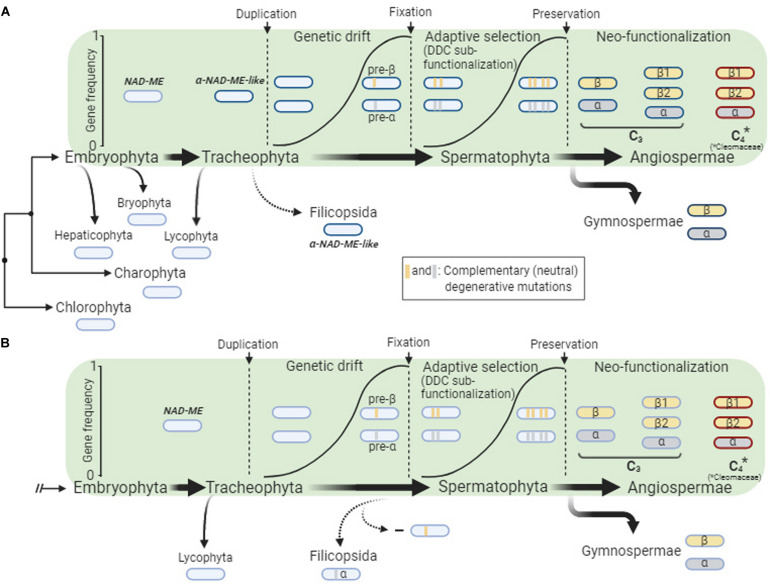FIGURE 6.
Scheme showing our hypothesis for the evolution of the α-NAD-ME and β-NAD-ME genes in seed plants. The green panel shows the general course of the gene duplication event and the frequency of the both genes in the population until their fixation (genetic drift) and preservation (adaptive selection). The NAD-ME duplication took place late during the evolution of vascular plants, as the α- and β-NAD-ME paralogs were not found in Lycophytha, an early branching division of Tracheophyta. After that, one possible scenario is that one α-NAD-ME-like gene lineage was duplicated and fixed in seed plants but not in ferns, which kept a single copy (A). Alternatively, the NAD-ME duplication could have occurred before Filicopsida and Spermatophyta split and the pre-β-NAD-ME copy was lost in ferns, as no selective pressure was exerted at that point (B). In seed plants, adaptive selection through a duplication-degeneration-complementation (DDC) sub-functionalization process gave rise to the α- and β-NAD-ME gene lineages. Once preserved, both paralogs were double down and split, providing raw material for functional innovations.

